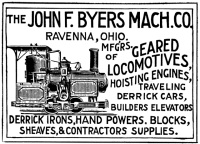I decided I wanted my next engine to be able to move itself about. Long story short, I ended up finding the plans for a tiny narrow-gauge geared live-steamer that will run on O-gauge track and decided to give it a go. Turns out the plans are in metric and I'm not. But my original plan is essentially to leave the metric dimensions more or less in place and make a metric model with imperial holes.
It's never quite that easy.. it'll be an interesting challenge.
It's only the second day and my plan sheets are already covered in scribbles, noting changes from one place to another. It doesn't help that I'm also modifying the design somewhat and the gears I have on hand aren't the same as the plans call for.
I've already broken one 2-56 tap and screw. The first attempt to remove the broken tap involved soaking the part in muriatic acid, based on some advice I found on the internet. That worked very rapidly.. at eating away the aluminum. Five minutes later the part was 80% of it's starting size and it was even odds if the tap would dissolve out or the aluminum would dissolve around it first So I made another part and promptly snapped a cap screw off in it. Went back to the internet for advice and spent most of the afternoon trying to Alum it out to no avail. I finally drilled it out very slowly with a carbide PCB drill and retapped.. slightly off center.
So I made another part and promptly snapped a cap screw off in it. Went back to the internet for advice and spent most of the afternoon trying to Alum it out to no avail. I finally drilled it out very slowly with a carbide PCB drill and retapped.. slightly off center.  Oh well, I think I can cover for it later.
Oh well, I think I can cover for it later.
Here's the progress to date-- one running plate, two side frames, two end beams, eight bushings and 4 axles (the gears I didn't make). It's already an unholy mix of metric and imperial that will probably have Marv reaching for his largest mallet. --the basic measurements and holes holding things together are even metric values-- the holes and screw sizes themselves are imperial and the axle hole spacing is determined by the gear train and isn't a convenient number in either system. Some of the other holes are spaced imperial so I can bolt things on later made on the manual machines...
--the basic measurements and holes holding things together are even metric values-- the holes and screw sizes themselves are imperial and the axle hole spacing is determined by the gear train and isn't a convenient number in either system. Some of the other holes are spaced imperial so I can bolt things on later made on the manual machines...

It's never quite that easy.. it'll be an interesting challenge.
It's only the second day and my plan sheets are already covered in scribbles, noting changes from one place to another. It doesn't help that I'm also modifying the design somewhat and the gears I have on hand aren't the same as the plans call for.
I've already broken one 2-56 tap and screw. The first attempt to remove the broken tap involved soaking the part in muriatic acid, based on some advice I found on the internet. That worked very rapidly.. at eating away the aluminum. Five minutes later the part was 80% of it's starting size and it was even odds if the tap would dissolve out or the aluminum would dissolve around it first
Here's the progress to date-- one running plate, two side frames, two end beams, eight bushings and 4 axles (the gears I didn't make). It's already an unholy mix of metric and imperial that will probably have Marv reaching for his largest mallet.








